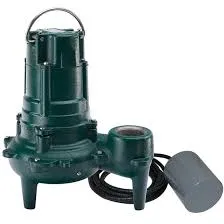English
- Afrikaans
- Albanian
- Amharic
- Arabic
- Armenian
- Azerbaijani
- Basque
- Belarusian
- Bengali
- Bosnian
- Bulgarian
- Catalan
- Cebuano
- Corsican
- Croatian
- Czech
- Danish
- Dutch
- English
- Esperanto
- Estonian
- Finnish
- French
- Frisian
- Galician
- Georgian
- German
- Greek
- Gujarati
- Haitian Creole
- hausa
- hawaiian
- Hebrew
- Hindi
- Miao
- Hungarian
- Icelandic
- igbo
- Indonesian
- irish
- Italian
- Japanese
- Javanese
- Kannada
- kazakh
- Khmer
- Rwandese
- Korean
- Kurdish
- Kyrgyz
- Lao
- Latin
- Latvian
- Lithuanian
- Luxembourgish
- Macedonian
- Malgashi
- Malay
- Malayalam
- Maltese
- Maori
- Marathi
- Mongolian
- Myanmar
- Nepali
- Norwegian
- Norwegian
- Occitan
- Pashto
- Persian
- Polish
- Portuguese
- Punjabi
- Romanian
- Russian
- Samoan
- Scottish Gaelic
- Serbian
- Sesotho
- Shona
- Sindhi
- Sinhala
- Slovak
- Slovenian
- Somali
- Spanish
- Sundanese
- Swahili
- Swedish
- Tagalog
- Tajik
- Tamil
- Tatar
- Telugu
- Thai
- Turkish
- Turkmen
- Ukrainian
- Urdu
- Uighur
- Uzbek
- Vietnamese
- Welsh
- Bantu
- Yiddish
- Yoruba
- Zulu
Telephone: +86 13120555503
Email: frank@cypump.com
Dec . 11, 2024 01:33 Back to list
Optimal Management of Slurry Pumps for Efficient Material Transport in Industrial Applications
The Importance of Pumping Slurry in Industrial Applications
Slurry, a mixture of solids and liquids, plays a crucial role in various industrial applications, particularly in mining, construction, and waste management. As industries evolve and demand for efficiency increases, the importance of effective slurry pumping systems cannot be overstated. This article explores the significance of pump slurry technology, its challenges, and its applications, highlighting its impact on modern industrial processes.
Understanding Slurry
Before delving into the pumping aspect, it is essential to understand what slurry is. Typically consisting of fine particles suspended in water or other liquids, slurry can vary significantly in density, viscosity, and chemical composition. In mining, for instance, it is often used to transport ores from one location to another. In construction, it can be encountered in the form of cement mixtures or dredged materials. Handling slurry efficiently is critical for operational success, making pumping systems indispensable.
The Mechanics of Slurry Pumping
Pumping slurry is a specialized task due to the unique challenges presented by its composition. Unlike clear liquids, slurry has a higher density and can contain abrasive particles that can wear down equipment over time. As such, slurry pumps are designed to handle these specific conditions. They come in various types, including centrifugal pumps, positive displacement pumps, and diaphragm pumps, each suited for different applications and slurry characteristics.
Centrifugal pumps, for example, are commonly used in applications with lower solid concentrations, while positive displacement pumps are preferred for thick slurries, ensuring consistent flow regardless of pressure changes. The choice of pump depends on factors such as the slurry's viscosity, temperature, and chemical properties, as well as the specific requirements of the pumping operation.
Challenges in Slurry Pumping
pump slurry

Despite advancements in pump technology, several challenges remain in the effective management of slurry pumping systems. One of the most significant issues is wear and tear on the pump components, which can lead to increased maintenance costs and downtime. The abrasive nature of some slurries necessitates the use of more durable materials, which can also raise initial capital costs.
Another challenge is the viscosity and flow characteristics of the slurry, which can change based on various factors such as temperature and particle concentration. Achieving optimal pumping efficiency requires careful monitoring and sometimes the addition of chemicals to adjust the slurry properties. Additionally, managing the energy cost associated with pumping operations is crucial, as some slurries can be energy-intensive to pump.
Innovative Solutions and Technologies
To address the challenges of pumping slurry, engineers and researchers are constantly developing innovative solutions. The introduction of smart technologies, such as IoT sensors and advanced monitoring systems, has made it possible to track performance metrics in real-time, allowing for better predictive maintenance and improved efficiency.
Moreover, advances in material science have led to the development of more resilient pump components that can withstand erosive wear. These improvements help extend the lifespan of pumping equipment, reduce maintenance costs, and ultimately enhance overall operational efficiency.
Conclusion
In conclusion, the effective pumping of slurry is a vital component of various industrial processes. As the demand for efficiency and productivity grows, the advancement of slurry pumping technologies will be essential to meet these needs. By understanding the unique characteristics of slurry, addressing the challenges associated with its pumping, and leveraging innovative solutions, industries can optimize their operations, reduce costs, and contribute to more sustainable practices. The future of slurry pumping holds significant promise, paving the way for increased innovation and efficiency in industrial applications.
-
ISG Series Vertical Pipeline Pump - Chi Yuan Pumps Co., LTD.|Advanced Hydraulic Design&Energy-Efficient Solutions
NewsJul.30,2025
-
ISG Series Vertical Pipeline Pump - Chi Yuan Pumps Co., LTD.
NewsJul.30,2025
-
ISG Series Vertical Pipeline Pump - Chi Yuan Pumps Co., LTD.|energy-efficient fluid handling&industrial durability
NewsJul.30,2025
-
ISG Series Vertical Pipeline Pump - Chi Yuan Pumps | Advanced Engineering&Industrial Efficiency
NewsJul.30,2025
-
ISG Series Pipeline Pump - Chi Yuan Pumps | High Efficiency, Energy Saving
NewsJul.30,2025
-
ISG Series Vertical Pipeline Pump-Chi Yuan Pumps|High Efficiency&Reliable Performance
NewsJul.29,2025










